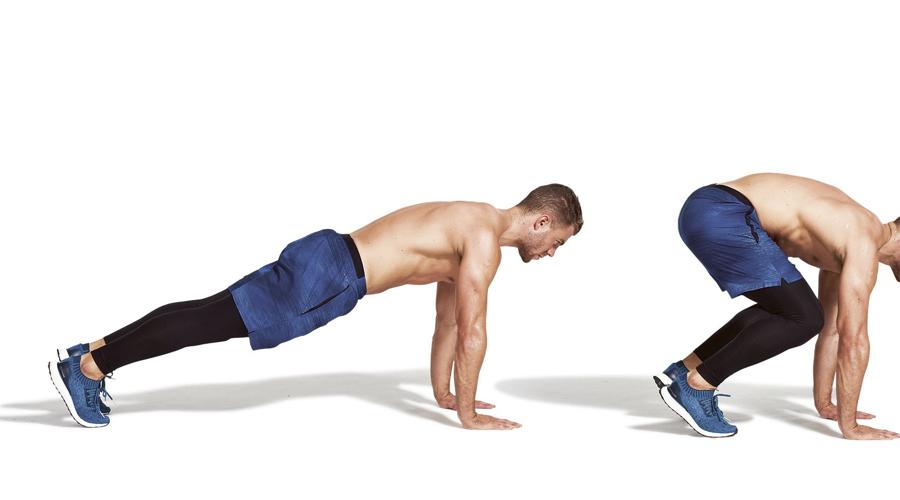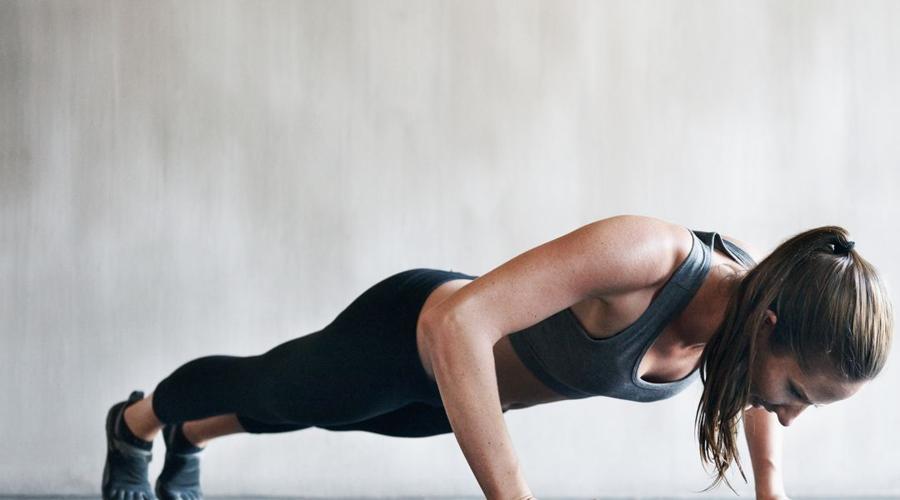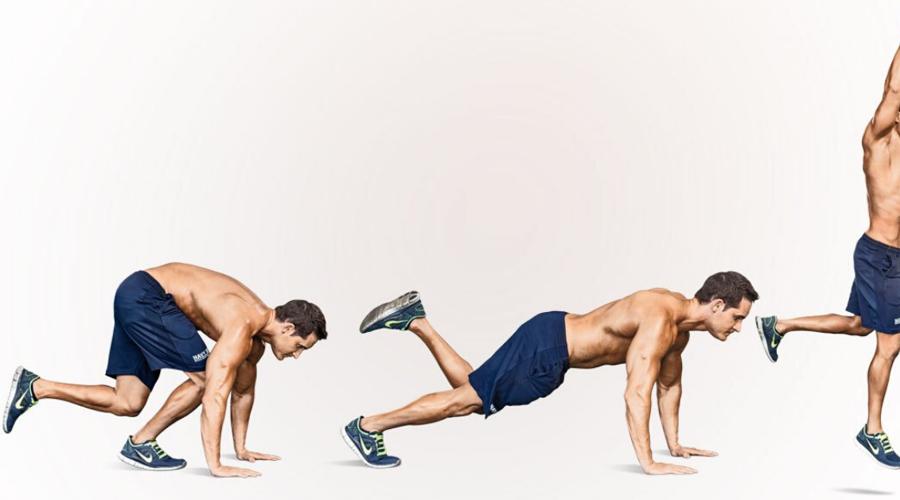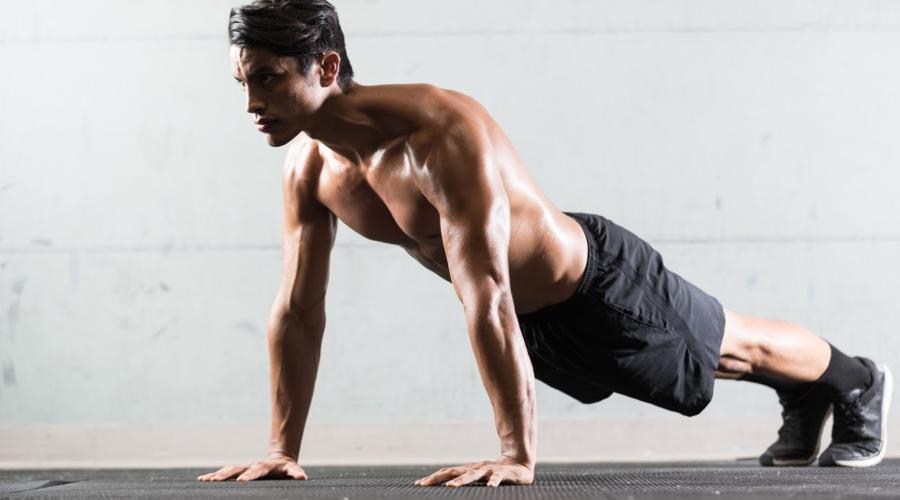 If you’re looking to get fit and improve your overall health, you might want to consider adding squat thrust to your workout routine. This popular exercise is a variation of the classic burpee and has become increasingly popular in recent years due to its effectiveness in targeting multiple muscle groups while improving cardiovascular health.
If you’re looking to get fit and improve your overall health, you might want to consider adding squat thrust to your workout routine. This popular exercise is a variation of the classic burpee and has become increasingly popular in recent years due to its effectiveness in targeting multiple muscle groups while improving cardiovascular health.
In this post, we will take a closer look at the half burpee and explore why it’s such a great exercise. We’ll start by discussing what a half burpee is and how it differs from a traditional burpee. We’ll then explore the benefits of squat thrust, including how it can help you build strength, burn calories, and improve your endurance.
Whether you’re a fitness enthusiast or just starting on your fitness journey, this guide will provide you with everything you need to know to perform the squat thrust correctly and effectively. So, let’s dive in and discover the power of squat thrust together!
What is the Half Burpee or Squat Thrust?
The half burpee, also known as the squat thrust, is an exercise that involves moving from a standing position to a plank position and back up again. To perform the exercise, start by standing with your feet shoulder-width apart. Lower your body down into a squat position and then place your hands on the ground in front of you. Quickly jump both feet back into a plank position, making sure to keep your core engaged and your body in a straight line. Jump both feet back to your hands and stand up to complete the exercise.
It is a great exercise for building strength, increasing endurance, and improving cardiovascular health. It targets multiple muscle groups including the core, arms, shoulders, chest, and legs. The exercise can be modified to fit different fitness levels by adjusting the speed, and repetitions, or incorporating additional movements such as a push-up or jump at the end of the plank position.

Benefits of the Squat Thrust
Here are some of the main benefits of performing the squat thrust:
- Full-Body Workout: The squat thrust targets multiple muscle groups in the body, including the chest, shoulders, triceps, core, glutes, and legs. This makes it an effective full-body workout that can help you build strength and muscle mass.
- Cardiovascular Health: The rapid movements involved in the squat thrust make it a high-intensity exercise that can increase your heart rate and improve your cardiovascular health. It can help you burn calories, reduce body fat, and increase endurance.
- Flexibility: The squat thrust requires a good range of motion in the hips, knees, and ankles. This can help improve your flexibility and mobility, which can reduce the risk of injury and improve your overall physical performance.
- Easy to Do: The squat thrust is a simple exercise that can be done almost anywhere, without the need for equipment. It is a great option for people who are short on time, as it can be done quickly and easily.
- Versatile: The squat thrust can be modified in a variety of ways to suit different fitness levels and goals. You can increase the speed or number of repetitions for a more intense workout, or add a push-up or jump at the end of the plank position to increase the challenge.
Read more about Exercise Ball to Lose Weight?
How to Do the Squat Thrust: Step-by-Step Guide
Here’s a step-by-step guide on how to perform a basic squat thrust:
- Begin in a standing position with your feet shoulder-width apart.
- Lower your body down into a squat position by bending your knees and pushing your hips back.
- Place your hands on the ground in front of you, shoulder-width apart.
- Quickly jump both feet back, one at a time, into a plank position with your hands still on the ground.
- Hold the plank position for a moment, making sure to keep your body in a straight line from head to heels.
- Quickly jump both feet forward to your hands.
- Stand up to complete one repetition.
To make the squat thrust more challenging, you can add a push-up or a jump at the end of the plank position. Here’s how:
- Follow steps 1-4 as described above.
- Perform a push-up by bending your elbows and lowering your body down towards the ground.
- Push your body back up into the plank position.
- Jump both feet forward to your hands.
- Perform a jump by standing up and lifting both feet off the ground at the same time.
- Land softly and lower your body back down into a squat position to complete one repetition.
Remember to engage your core muscles throughout the exercise and to keep your movements fluid and controlled. As with any exercise, start with a few repetitions and gradually increase the number and speed as you become more comfortable with the movement.
Squat Thrust Variations and Progressions
Here are some squat thrust variations and progressions that you can try:
- Modified Squat Thrust: If you’re new to the squat thrust or have limited mobility, you can modify the exercise by stepping one foot back at a time instead of jumping both feet back at once. This reduces the impact on your joints and makes the exercise more accessible.
- Squat Thrust with Push-Up: To make the squat thrust more challenging, you can add a push-up to the plank position. This adds an extra upper body workout and requires more strength and coordination.
- Squat Thrust with Jump: To increase the intensity of the squat thrust, you can add a jump at the end of the exercise. This involves standing up and jumping into the air, lifting both feet off the ground at the same time. This requires more power and explosiveness.
- Plyometric Squat Thrust: This advanced variation involves performing the squat thrust with a jump and then immediately dropping back down into a push-up. This adds a plyometric element to the exercise and requires more strength and endurance.
- Weighted Squat Thrust: You can add resistance to the squat thrust by holding dumbbells or other weights while performing the exercise. This increases the workload on your muscles and can help you build strength and muscle mass.
Remember to progress gradually and challenge yourself safely. Start with the basic squat thrust and work your way up to more advanced variations as you become stronger and more confident. Make sure to maintain proper form and alignment throughout the exercise to avoid injury.

Adding Burpees to Your Workout Routine
If you’re interested in adding burpees, including the half burpee, to your workout routine, here are some tips to keep in mind:
- Start Slow: If you’re new to burpees, start with just a few repetitions and gradually work your way up. Burpees are a high-intensity exercise that can be challenging for beginners.
- Incorporate Burpees into Your Routine: You can add burpees to your workout routine by incorporating them into circuits, HIIT workouts, or as a standalone exercise. You can perform them for a certain amount of time or number of repetitions.
- Modify the Exercise: If you find burpees too challenging or have limited mobility, you can modify the exercise by skipping the jump or push-up, or by stepping one foot back at a time instead of jumping both feet back.
- Combine with Other Exercises: You can combine burpees with other exercises to create a full-body workout. For example, you can perform a set of burpees followed by squats, lunges, or push-ups.
- Rest and Recover: Burpees are a high-intensity exercise that can put a lot of stress on your body. Make sure to take enough rest and recovery time between workouts to prevent injury and avoid burnout.
Remember to listen to your body and adjust your workout routine as needed. Burpees are a great exercise that can help you build strength, endurance, and cardiovascular fitness, but they’re not for everyone. If you have any medical conditions or concerns, consult with your doctor before starting a new exercise routine.
Read more about Fitness Tips for Women

Safety and Precautions
Here are some tips to help you stay safe and avoid injury:
- Warm-Up Properly: Before performing burpees, it’s important to warm up your muscles and joints to reduce the risk of injury. You can do some light cardio, dynamic stretches, or a few sets of easier exercises to prepare your body for the workout.
- Maintain Proper Form: Proper form is crucial when performing burpees to avoid putting too much stress on your joints and muscles. Make sure to keep your core engaged, your back straight, and your movements controlled and fluid.
- Take It Slow: If you’re new to burpees, start with a few repetitions and gradually increase the number as you become more comfortable with the exercise. Don’t push yourself too hard too quickly, as this can increase the risk of injury.
- Modify the Exercise: If you find burpees too challenging or have limited mobility, you can modify the exercise by skipping the jump or push-up, or by stepping one foot back at a time instead of jumping both feet back.
- Stay Hydrated: Burpees are a high-intensity exercise that can cause you to sweat and lose fluids. Make sure to stay hydrated by drinking plenty of water before, during, and after your workout.
- Rest and Recover: Burpees can be a demanding exercise that puts a lot of stress on your body. Make sure to take enough rest and recovery time between workouts to prevent injury and avoid burnout.
If you experience any pain or discomfort during or after performing burpees, stop the exercise immediately and consult with your doctor or a certified fitness professional. By following these safety precautions and taking care of your body, you can safely incorporate burpees into your workout routine and reap the many benefits they offer.
Frequently Asked Questions (FAQs)
Q: What’s the difference between a squat thrust and a full burpee? A: A squat thrust involves moving from a standing position to a plank position and back up again, while a full burpee adds an additional jump and push-up at the end of the plank position.
Q: Is the up-downs exercise a good workout for beginners?
A: Yes, up-downs can be modified to suit different fitness levels and is a great exercise for beginners. However, it’s important to start slow and gradually increase the intensity as you become more comfortable with the movement.
Q: How many reps of the kickback burpee should I do?
A: The number of reps you should do depends on your fitness level and goals. Start with a few repetitions and gradually increase the number as you become stronger and more comfortable with the exercise.
Q: What muscles does the runner’s burpee work?
A: The runner’s burpee targets multiple muscle groups, including the chest, shoulders, triceps, core, glutes, and legs.
Q: Can the squat jump into plank exercise help me lose weight?
A: Yes, the squat jump into plank is a high-intensity exercise that can help you burn calories and lose weight when combined with a healthy diet and lifestyle.
Q: Are there any risks or safety concerns with the up-downs exercise? A: While the up-downs exercise is generally considered safe for most people, there are some risks and safety concerns you should be aware of, such as strain or injury to the joints and muscles. It’s important to warm up properly, maintain proper form, and listen to your body to avoid injury.
Q: How can I modify the kickback burpee to make it easier?
A: You can modify the kickback burpee by stepping one foot back at a time instead of jumping both feet back, or by skipping the jump or push-up at the end of the exercise.
Q: Can I add weights to the runner’s burpee for a more challenging workout?
A: Yes, you can add weights to the runner’s burpee by holding dumbbells or other weights while performing the exercise. This can increase the workload on your muscles and help you build strength and muscle mass.